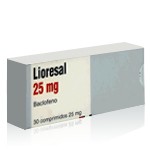Living Better with Muscle Spasticity


Muscle spasticity is a condition that affects millions of people worldwide, particularly those living with neurological disorders. It is not simply “stiff muscles,” but a complex neurological phenomenon that arises when communication between the brain, spinal cord, and muscles is disrupted. Understanding spasticity is crucial for patients, caregivers, and healthcare professionals alike, as it directly affects quality of life and the ability to perform daily tasks.
Defining Muscle Spasticity
At its core, muscle spasticity refers to an abnormal increase in muscle tone due to disrupted signals from the central nervous system. Normally, muscle tone allows us to maintain posture and perform smooth, controlled movements. In spasticity, however, the pathways that regulate reflexes and voluntary motion are impaired. This leads to excessive contraction of muscles, making them stiff, resistant to movement, and difficult to control.
Spasticity is most commonly seen in conditions such as multiple sclerosis, cerebral palsy, stroke, traumatic brain injury, and spinal cord injury. It can develop gradually or appear suddenly after neurological damage. Its severity varies widely, ranging from mild stiffness to severe, painful rigidity that significantly impairs mobility.
The Experience of Muscle Spasticity
Living with muscle spasticity is not uniform; each individual describes the sensation differently depending on the muscles involved and the degree of nerve damage. Commonly, patients report tightness that feels as though the muscles are permanently “locked” in place. Attempting to move the affected limb can produce a pulling sensation, as though the body is resisting itself.
For many, spasticity is accompanied by muscle soreness, cramping, and fatigue. A person may feel as though their body is constantly tensed, even when they are trying to relax. Some describe it as a persistent tug-of-war between wanting to move and being held back by invisible restraints. The unpredictable nature of spasticity is particularly distressing: stiffness may suddenly worsen in response to stress, temperature changes, or infections.
In severe cases, spasticity can cause contractures — permanent shortening of muscles and tendons — that lead to deformities and limit mobility. This underscores why early recognition and treatment are essential.
Spasticity Versus Flaccidity
To fully understand spasticity, it is important to contrast it with its opposite: flaccidity. Both are disorders of muscle tone, but they manifest in fundamentally different ways.
Spasticity is characterized by excessive muscle tone, making muscles feel stiff, rigid, and resistant to movement. Flaccidity, on the other hand, refers to the complete loss of muscle tone. In flaccidity, muscles are limp, weak, and cannot maintain posture or support movement.
For example, a stroke patient may initially experience flaccidity, where the affected arm hangs loosely without resistance. Over time, as the nervous system attempts to reorganize, this flaccidity may transform into spasticity, where the same arm becomes stiff and difficult to move. This shift illustrates the dynamic relationship between neural injury and motor control, and why rehabilitation must be tailored to the patient’s evolving condition.
Spasticity Versus Spasms
Another source of confusion is the difference between spasticity and spasms. While the terms are sometimes used interchangeably, they refer to distinct phenomena.
Spasticity is a sustained increase in muscle tone, present most of the time and triggered by attempts at voluntary movement or passive stretching. It is more of a chronic state of stiffness that persists throughout daily life.
Spasms, however, are sudden, involuntary muscle contractions. They may last for seconds or minutes and can occur even when the person is at rest. Spasms can be painful, resembling a charley horse or cramp, and may be triggered by stimuli such as touch, cold air, or a sudden movement.
In many patients, spasticity and spasms coexist. A person may live with constant stiffness due to spasticity, yet experience episodic spasms that intensify discomfort and disrupt sleep. Recognizing this difference helps physicians determine whether long-acting or fast-acting treatments are more appropriate.
Causes and Underlying Mechanisms
Spasticity arises when the upper motor neurons in the brain or spinal cord are damaged. These neurons normally inhibit excessive reflex activity by regulating signals to the spinal cord. Without this regulation, reflex arcs become overactive, causing muscles to contract excessively in response to minimal stimuli.
This explains why spasticity often worsens when the body is stimulated — such as during movement, touch, or even irritation of the bladder or bowel. It also explains why spasticity is seen in conditions that damage the central nervous system rather than the muscles themselves.
While spasticity is often framed as a purely negative phenomenon, it occasionally has protective functions. For example, increased tone can help individuals with weak muscles maintain posture or support circulation in immobile limbs. However, in most cases, the drawbacks — pain, restricted mobility, and risk of joint damage — outweigh any benefits.
Impact on Daily Life
The consequences of spasticity extend far beyond physical symptoms. Difficulty walking, dressing, or bathing can compromise independence and reduce quality of life. Pain and stiffness often interfere with sleep, which in turn worsens fatigue and mood disorders.
Children with cerebral palsy may struggle with spasticity that limits developmental milestones such as crawling, walking, or grasping objects. Adults recovering from stroke or spinal cord injury may find their rehabilitation progress hindered by uncontrollable stiffness. In severe cases, caregivers must assist with basic tasks, increasing emotional and financial burdens on families.
Therefore, treating spasticity is not only about relieving physical discomfort but also about restoring dignity and autonomy.
Approaches to Treatment
Management of spasticity requires a multifaceted strategy, often combining physical therapy, medications, and sometimes surgical interventions. Stretching and strengthening exercises remain foundational, as they help maintain joint mobility and reduce the risk of contractures. Orthotic devices may also support proper positioning and prevent deformities.
Medications are central to treatment, and one of the most widely used drugs is Lioresal, the brand name for baclofen. This agent specifically targets the neurological pathways involved in spasticity.
The Role of Lioresal
Lioresal (baclofen) is a muscle relaxant that works by acting on the gamma-aminobutyric acid (GABA) receptors in the spinal cord. By enhancing inhibitory signals, it reduces the overactive reflexes that drive spasticity. This mechanism allows muscles to relax, improves range of motion, and decreases pain associated with stiffness.
Lioresal can be administered orally or intrathecally. Oral baclofen is often the first step, especially for patients with moderate spasticity. It is generally well tolerated but may cause side effects such as drowsiness, weakness, or dizziness. In cases where oral therapy is insufficient or poorly tolerated, intrathecal baclofen pumps can be implanted. These devices deliver baclofen directly into the cerebrospinal fluid, allowing for lower doses and fewer systemic side effects while providing more powerful relief.
The benefits of Lioresal extend beyond physical function. By easing muscle stiffness, patients often report better sleep, reduced fatigue, and an improved ability to participate in rehabilitation exercises. For children with cerebral palsy, intrathecal baclofen can help prevent contractures and support motor development. For adults, it can significantly improve independence and quality of life.
However, treatment must be carefully monitored. Abrupt withdrawal of baclofen, especially in those with implanted pumps, can lead to dangerous complications such as seizures or severe rebound spasticity. For this reason, physicians closely supervise dose adjustments and encourage patients to follow treatment plans precisely.
Looking Ahead: Research and Future Directions
Advances in neuroscience continue to expand our understanding of spasticity. Researchers are exploring new pharmacological agents, such as cannabinoids and selective serotonin modulators, that may provide relief with fewer side effects. Noninvasive brain stimulation techniques, including transcranial magnetic stimulation, are also being studied for their potential to modulate motor pathways.
At the same time, rehabilitation science is emphasizing holistic approaches that combine physical, psychological, and social support. Since spasticity affects the entire person — not just their muscles — effective management must address mental health, social participation, and overall quality of life.
Conclusion
Muscle spasticity is a complex neurological condition defined by excessive muscle tone and stiffness. It differs from flaccidity, which is marked by the absence of tone, and from spasms, which are sudden involuntary contractions. For those living with spasticity, the condition is more than physical tightness — it is a daily challenge that affects mobility, independence, and emotional well-being.
Treatment requires a combination of therapies, and medications such as Lioresal play a central role in restoring balance to the nervous system. While spasticity may not always be curable, ongoing research and innovative therapies continue to offer hope for improved outcomes. Ultimately, understanding and managing spasticity is about giving patients the freedom to move, rest, and live with greater comfort and dignity.
Drug Description Sources: U.S. National Library of Medicine, Drugs.com, WebMD, Mayo Clinic, RxList.
Reviewed and Referenced By:
Dr. Alan Carter, PharmD Clinical pharmacist specializing in neurological and pain disorders. Frequently cited on Drugs.com for reviewing therapeutic guidance on baclofen and other muscle relaxants, with expertise in dosage optimization and drug safety.
Dr. Carol DerSarkissian, MD Board-certified in internal medicine, contributor to WebMD. Her clinical reviews cover the management of neurological conditions such as multiple sclerosis and stroke, with attention to spasticity treatment and rehabilitation strategies.
Dr. Dianne B. McKay, MD Professor of Clinical Pharmacology, contributor to RxList and NIH. Her medical insights highlight the long-term pharmacological safety of central nervous system agents, including baclofen in chronic use.
Dr. William C. Shiel Jr., MD, FACP, FACR Chief Editor at MedicineNet, affiliated with WebMD. Authored comprehensive medical content on neurological conditions and therapies, including mechanisms of action, side effects, and clinical applications of muscle relaxants like baclofen.
(Updated at Sep 29 / 2025)

